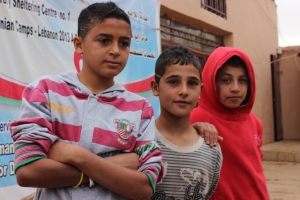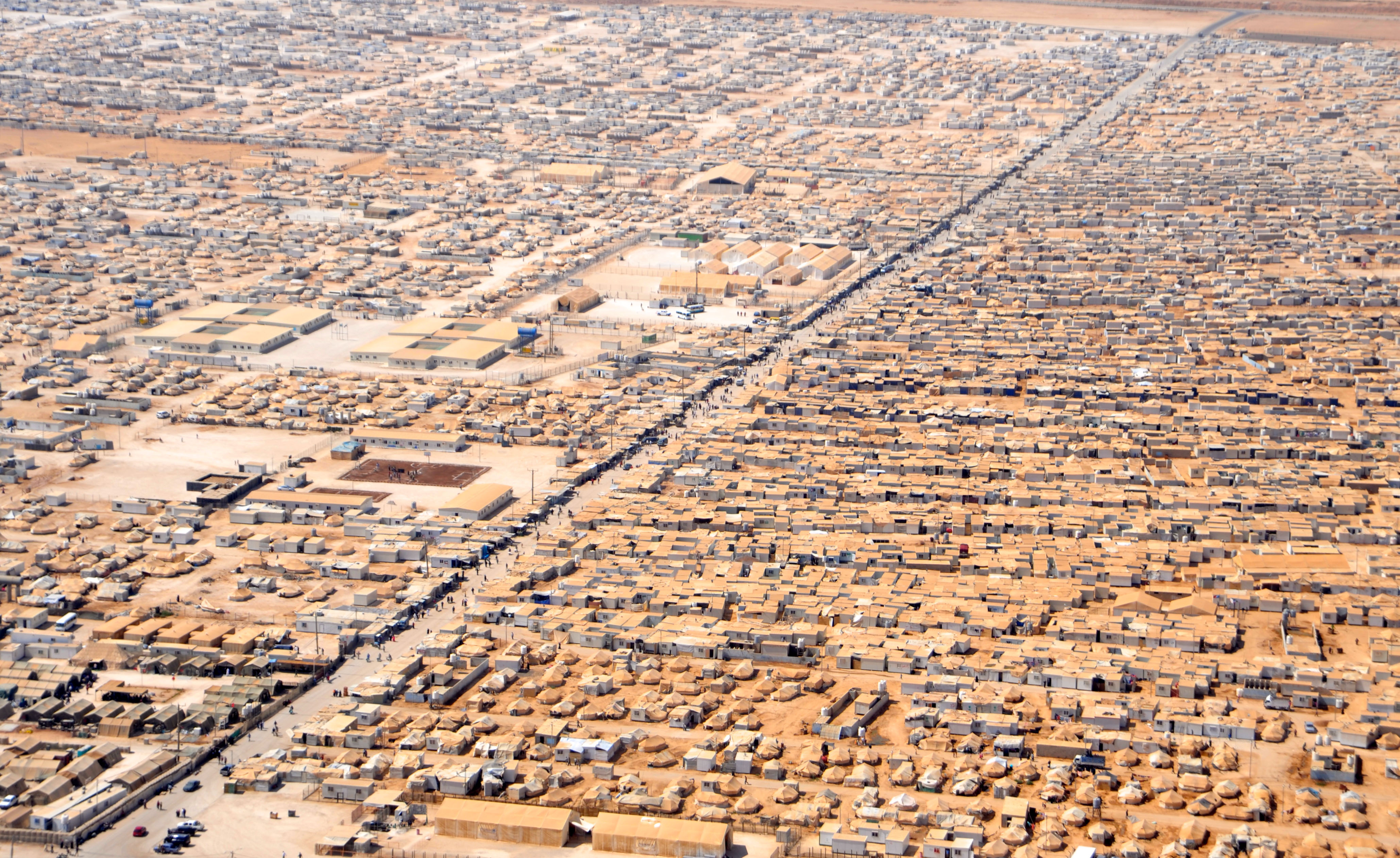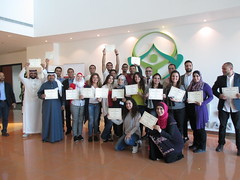 Reflections from OC intern Georgia Chalkoutsaki on education in emergencies, just back from her field mission to Lebanon and Jordan:
Reflections from OC intern Georgia Chalkoutsaki on education in emergencies, just back from her field mission to Lebanon and Jordan:
As part of my master’s degree at the University of Birmingham, I had the opportunity to undertake a field trip in order to collect data for my thesis. Since I was interested in the Syria regional humanitarian crisis and the education of that massive flow of refugees, either Lebanon or Jordan seemed a right choice. Given the fact that the whole region is facing the same problem (according to UNICEF the number of children suffering from the crisis has more than doubled since March 2013), I decided to visit them both in order to examine if they adopt similar practices on the matter.
To begin with, Lebanon and Jordan may both be part of the ‘Arab World’ but yet they are full of differences: different regimes, different lifestyles, different educational systems. The Lebanese, besides English, also significantly using the French language, and it is being taught in their schools from an early age, often replacing Arabic in core modules such as mathematics and science. In Jordan, Arabic remains the main language of instruction though English is widely used. Where refugees are integrated into the local schools, they are following the local curriculum.
 Linguistic barriers were one of the first and most obvious challenges that refugee children have to deal with. Depending on the age, some of them haven’t been taught English, let alone French again. Consequently, being in a class where these languages dominate can be pretty confusing and stressful. In many cases they struggle even in Arabic as they have a different accent than the one used by Jordanians or Lebanese. Unfortunately, that often led to being bullied by their peers.
Linguistic barriers were one of the first and most obvious challenges that refugee children have to deal with. Depending on the age, some of them haven’t been taught English, let alone French again. Consequently, being in a class where these languages dominate can be pretty confusing and stressful. In many cases they struggle even in Arabic as they have a different accent than the one used by Jordanians or Lebanese. Unfortunately, that often led to being bullied by their peers.
Integration is another major issue. These children apart from the language issues they have to be incorporated into a new school environment where they often feel unwelcome. UNHCR, UNICEF and both the Lebanese and Jordanian governments are putting really hard efforts in order to find effective solutions. Many activities have been taking place – usually NGOs are being involved as well – in order for these children to blend, familiarise and bond with each other. The one that amazed me the most was the setup of football games consisting of mixed teams. In this activity Syrian and local children were on the same team giving them an opportunity to see one another as a friend and co-player (“we all speak football”), cooperate and embrace their differences and similarities.
 Still the main question remains: how are all these children going to be educated? In Lebanon alone we are talking about half a million refugee children: hundreds of thousands of children of various age groups that need to receive some kind of education (this number doubles the number of education-age children in the country). Countries such as Lebanon (4.2 million population) and Jordan (6 million population) are not equipped to accept that number of Syrians (in Lebanon now one in 4 residents is a Syrian refugee!), along with the Iraqis (5% of Jordanian population) and Palestinians (60% of Jordanian population) that were already there from previous wars. Capacity issues are first on the agenda as there are not enough schools or teaching personnel to facilitate these numbers.
Still the main question remains: how are all these children going to be educated? In Lebanon alone we are talking about half a million refugee children: hundreds of thousands of children of various age groups that need to receive some kind of education (this number doubles the number of education-age children in the country). Countries such as Lebanon (4.2 million population) and Jordan (6 million population) are not equipped to accept that number of Syrians (in Lebanon now one in 4 residents is a Syrian refugee!), along with the Iraqis (5% of Jordanian population) and Palestinians (60% of Jordanian population) that were already there from previous wars. Capacity issues are first on the agenda as there are not enough schools or teaching personnel to facilitate these numbers.
However, since it is important to send as many children to school as possible (as the IASC Education Cluster succinctly summarises it: “due to the role education plays in providing physical, psychosocial and cognitive protection to children, adolescents and youth affected and made more vulnerable by crisis; disseminating life-saving messages about environmental and health risks; and facilitating a return to normalcy and overall stability for children, as well as families and communities”), a double shift project has been applied. In this case, local pupils go to school in the morning while Syrians attend the evening shift. Added to that, Jordanian and Lebanese governments, their Ministries of Education, UN agencies and various NGOs have all contributed to the creation of a new curriculum, specially designed according to the needs of Syrians. Despite all these efforts, there are still hundreds of Syrians out of education. Of course there are many families that do want to send their kids to school but they just can’t afford it. Fortunately, there are plenty of humanitarian actors are doing serious work in the region. Most of them are running programmes where they provide everything a child needs: textbooks, uniforms, transportation and of course the fees.
There is also another side, one I didn’t expect. The majority of these people believe that being a refugee is a temporary state that is going to end in 4 to 6 months. Consequently even though they appreciate the value of education they don’t want to put their kids into this procedure. “Having to convince their parents to let us give their kids the opportunity to go to school is one of the most difficult tasks we have”, a person from an NGO I talked said to me, “It’s an emotional and psychological factor. They just don’t want to accept that they are going to stay away from Syria that long.”

Za’atari camp in Jordan
Both Jordan and Lebanon are using more or less the same means. They are making use of their local schools in order to accommodate as many students as possible. They are collaborating with NGOs that are running various educational projects and they are trying to acquire more funding in order to serve the increasing needs. Their basic difference lies in the idea of the camp. The Jordanian government along with the support of UNHCR built a refugee camp just for Syrians (Zaatari camp consists the 4th largest city of Jordan at the moment) and since it is overcrowded, created a new one, with a larger capacity, back in April; there is an interesting blog tracking the “lived experience of school children in and around the Zaatari refugee camp”). On the contrary, Lebanon possesses none.
But why is that so important? In a constrained environment as the camp, families are registered, so are the school aged children. In a camp every child can go to school if they want to. There are of course many problems such as overcrowded classes or not a clear division of the children according to their ages and educational needs. Still, every child can go to school. In a country like Lebanon where the Syrians live in host communities, in both rural and urban areas, registration seems like a feat. In that case the officials are not in a position of knowing the exact number of children therefore planning ahead becomes even more difficult.
Generally my sense is that everyone is working closely with one another, all trying to do their very best in such a challenging situation. Of course there are issues, such as there are everywhere in situations like these, but there are working groups taking place regularly, there is close cooperation with the governments, the Ministries of Education and the various NGOs. Nonetheless, the number of children out of school is still huge and more measures need to be taken in order for these countries not only to facilitate the Syrians already moved there but to welcome the hundreds more entering their country every day.





